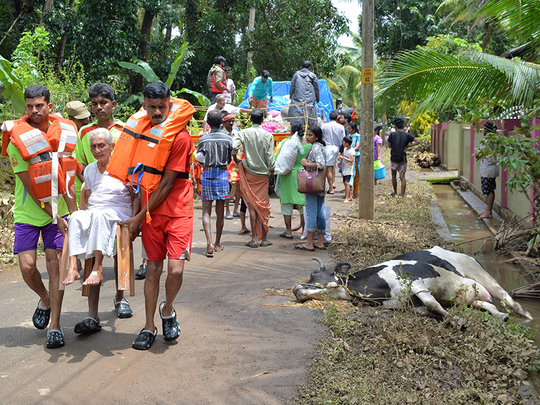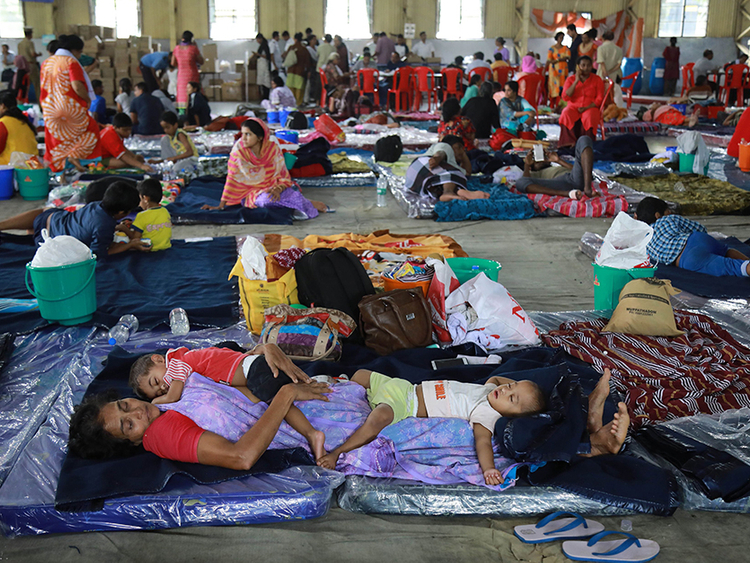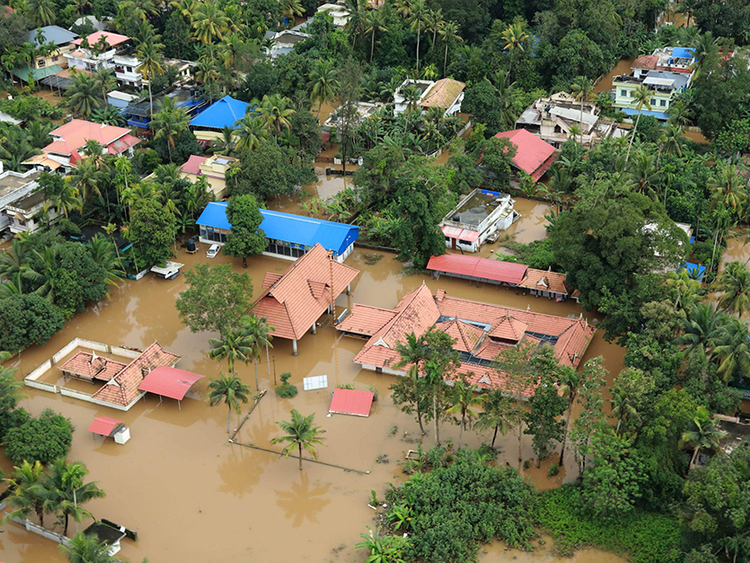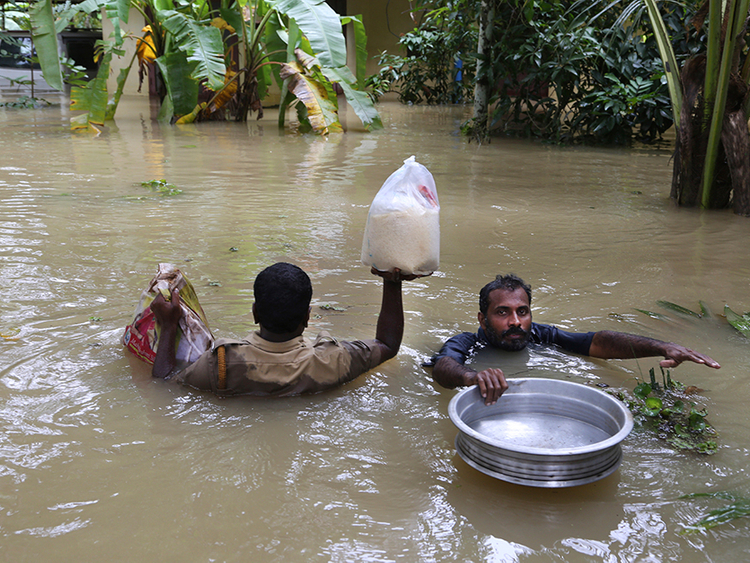
KOCHI, India: A deluge in India’s flood-stricken southwestern state of Kerala finally let up on Sunday, giving some respite for thousands of marooned families, while authorities feared an outbreak of disease among two million people crammed into relief camps.
Incessant rains since August 8 have caused the state’s worst floods in a century, and at least 186 people have died, many of them killed by landslides. The death toll in this monsoon season has climbed to more than 360. The beaches and backwaters of Kerala are top destinations for domestic and international tourists, but far fewer visit during the monsoon season.
The India Meteorological Department forecast heavy rainfall only at one or two places of Kerala on Sunday and withdrew a red alert in several districts. Flood waters too began to recede from several places.
Using boats and helicopters, India’s military has led rescue efforts to reach people in communities cut off for days by the floods, with many trapped on roof tops and the upper floors of their homes, and in desperate need of food and potable water.
Rescue teams were focused on the town of Chengannur on the banks of the Pamba River, where some 5,000 people are feared to be trapped, officials said.
More than 200,000 families have taken refuge at relief camps set up across the state, an official at the Kerala State Disaster Management office said. Kerala’s chief minister had earlier said two million people had taken shelter in camps since the monsoon rains began three months ago.
An estimated 800,000 people have taken shelter in some 4,000 relief camps across Kerala, P.H. Kurian, a top disaster management official in Kerala said.
If you are in the UAE, there are easy ways to donate for Kerala relief:
Kurian said authorities had largely restored the state’s water supply systems. “What we need right now is bottled water, which is easy to transport to remote and isolated places, where some people are still stranded,” Kurian said.
Thousands of rescuers were continuing efforts to reach out to stranded people and get relief supplies to isolated areas by hundreds of boats and nearly two dozen helicopters, Kurian said. He said weather conditions had improved considerably and expected the nearly 10,000 people still stranded to be rescued by Monday.
Anil Vasudevan, who handles disaster management at the Kerala health department, said authorities had isolated three people with chickenpox in one of the relief camps in Aluva town, nearly 250 kilometres from state capital Thiruvananthapuram.
He said the department was preparing to deal with a possible outbreak of waterborne and air-borne diseases in the camps, where an estimated two million people have taken shelter since the monsoon rains began three months ago.
Kerala, which usually receives high rainfall, has seen over 250 per cent more rain than normal between August 8 and August 15, causing the state authorities to release water from 35 dangerously full dams, sending a surge into its main river.
As the rain abated on Sunday morning, one resident in Cheranelloor, a suburb of Kochi situated on the banks of the Periyar river, visited his home to see when he and his family could return.
“The entire house is covered with mud. It will take days to clean to make it liveable. All our household articles, including the TV and fridge have been destroyed,” 60-year-old T P Johnny told Reuters.
In several villages in the suburbs of Chengannur, one of the worst-affected areas, carcasses of dead cattle were seen floating in muddy waters on Sunday as water began receding. However, vast rice fields continued to be marooned and many vehicles were submerged.
In some villages, the floodwaters had entered homes.
Rescuers in a motorboat reached a hamlet where they tried in vain to persuade an 80-year-old woman, Bhavani Yamma, to be taken to a government-run shelter from her partially submerged single-story house.
“I will not come. This is my home and I will die here,” said Yamma, who lives alone.
The team later rescued a 61-year-old kidney ailment patient, Raveendran, who needs dialysis twice a week.
One of the rescuers, Rajagopal, a police constable who uses only one name, said initially “we didn’t anticipate it would be such a big disaster.” But he said that by Wednesday, “we realised it’s really big.”
Officials estimate that more than 10,000 kilometres of roads have been damaged.
Late on Saturday, Kerala Chief Minister Pinarayi Vijayan said that there was no shortage of food in the state as traders had stocked up ahead of a local festival.
“The only problem is transporting it,” he told reporters.
“The central government and public have cooperated well in this effort to fight this disaster.” He also said that Prime Minister Narendra Modi, who visited the state on Saturday, announced an assistance of Rs5 billion ($71 million) against his request for Rs20 billion.
In Vatican City on Sunday, Pope Francis held a moment of silence during his noontime blessing to pray for Kerala flood victims.
“I am close to the church in Kerala, which is on the front lines in providing aid to the people,” Pope Francis said. He called for solidarity and “the concrete assistance of the international community.”
Kerala has a sizeable and ancient Christian community. Francis had hoped to visit India last year when he visited Bangladesh, but preparations fell apart in New Delhi and the Vatican added Myanmar to his trip instead.
















